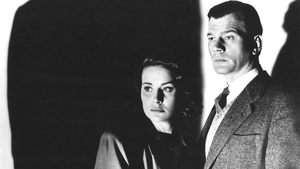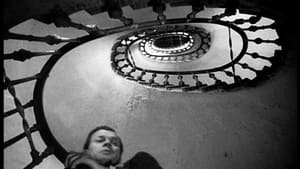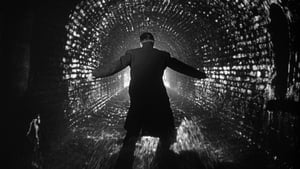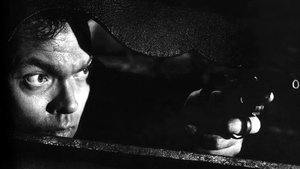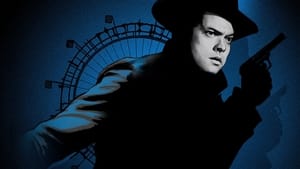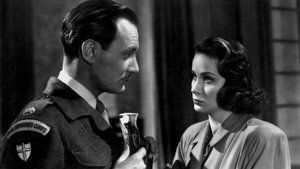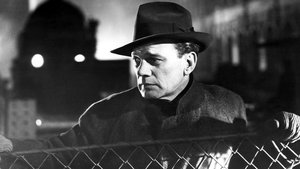Video Sources 0 Views
- Watch trailer
- The Third Man 1949 Colorized

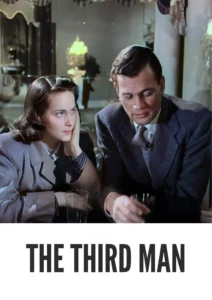
Synopsis
Table of Contents
Toggle
Step into the post-war world of Vienna with The Third Man, a captivating mystery thriller from 1949, now beautifully colorized for an immersive viewing experience. Directed by the visionary Carol Reed, this film weaves a complex narrative filled with suspense, betrayal, and moral ambiguity. Renowned for its iconic cinematography and haunting zither score, this HD download brings a classic piece of cinematic history back to life, making it essential for film aficionados and newcomers alike.
The Third Man follows the story of Holly Martins (Joseph Cotten), an American writer who arrives in post-war Vienna to visit his old friend Harry Lime (Orson Welles). Upon his arrival, Holly discovers that Lime has died under mysterious circumstances. As he investigates the truth behind his friend’s death, Holly is drawn into a shadowy underworld of corruption and deceit. He encounters a range of intriguing characters, including Anna Schmidt (Alida Valli), Lime’s former lover, and a relentless police officer determined to uphold the law.As Holly delves deeper into the murky waters of Vienna’s criminal landscape, he uncovers shocking truths about Harry Lime’s illicit activities involving penicillin racketeering. The film culminates in a tense confrontation that raises profound questions about morality and friendship. Ultimately, The Third Man is not just a thrilling mystery but also a poignant commentary on human nature in times of crisis.
The film features an exceptional cast that brings this gripping narrative to life:
- Joseph Cotten as Holly Martins
- Orson Welles as Harry Lime
- Alida Valli as Anna Schmidt
- Trevor Howard as Major Calloway
- Bernard Lee as Sergeant Paine
The Third Man is best described as a mystery thriller with elements of film noir and psychological drama. Its intricate plot and atmospheric setting create an engaging cinematic experience that captivates audiences.
Released in 1949, The Third Man stands as a landmark in British cinema, showcasing Carol Reed’s directorial prowess alongside Graham Greene’s compelling screenplay. The film emerged during a time when Europe was grappling with the aftermath of World War II, reflecting the disillusionment and moral complexities of the era. Its unique blend of suspenseful storytelling and striking visuals has cemented its status as one of the greatest films ever made.
This colorized version of The Third Man has been meticulously restored using advanced digital techniques to enhance its visual appeal while preserving the film’s original atmosphere. The process involved analyzing the grayscale tones of the original black-and-white footage and carefully assigning colors to each scene. This transformation breathes new life into the characters and settings, making them more relatable for contemporary audiences. While colorization can be a topic of debate among purists, it serves to introduce classic films to new viewers and ensure their continued appreciation.
- : Carol Reed
- : Graham Greene
- : Robert Krasker
- : Oswald Hafenrichter
- : London Films
- : 20th Century Fox
- : 104 minutes
- : MP4
- : HD (1080p)
- : Compatible with most devices, including smartphones, tablets, computers, and smart TVs.
The Third Man is often hailed as one of the finest films in world cinema. Its innovative use of shadows and light, coupled with its haunting score by Anton Karas, creates an unforgettable atmosphere that resonates with audiences even today. Critics have praised its complex characters and moral dilemmas, making it a staple in film studies and discussions about cinematic artistry.
- : What is The Third Man about?
- A: The Third Man is a mystery thriller centered around an American writer investigating the suspicious death of his friend in post-war Vienna.
- : Is The Third Man (1949) considered a classic?
- A: Yes, it is widely regarded as one of the greatest films ever made and a significant work in British cinema.
- : Is this version of The Third Man colorized?
- A: Yes, this version has been professionally colorized to enhance the viewing experience.
- : What makes The Third Man interesting for film enthusiasts?
- A: It offers deep insights into post-war morality and features groundbreaking cinematography that has influenced countless filmmakers.
- : What is the download format?
- A: The download format is MP4, which is compatible with most devices.
- : What resolution is the download?
- A: The resolution is HD (1080p), ensuring high-quality viewing.
Watch The Third Man Today!

